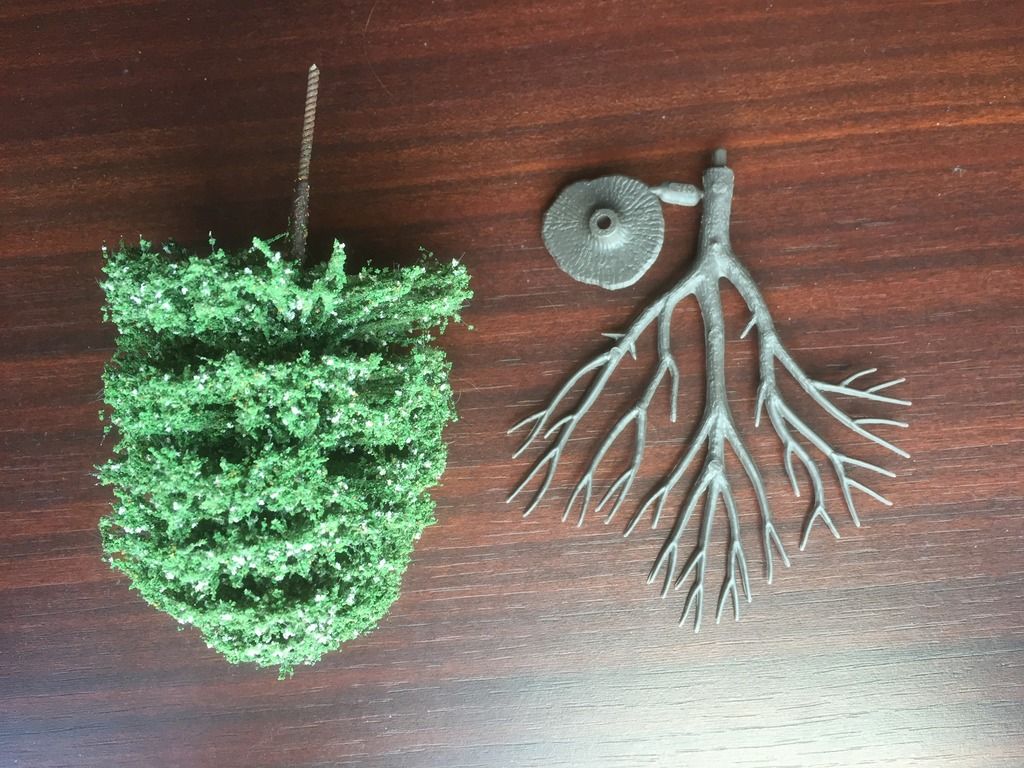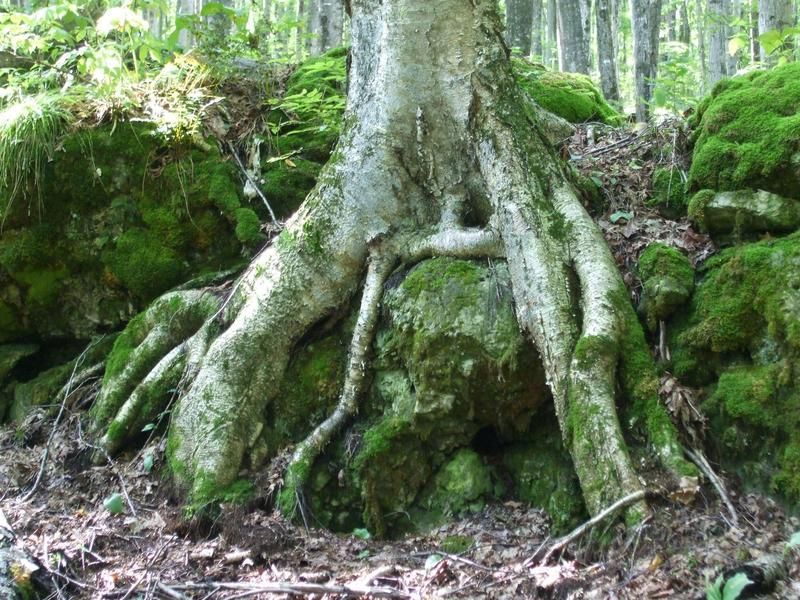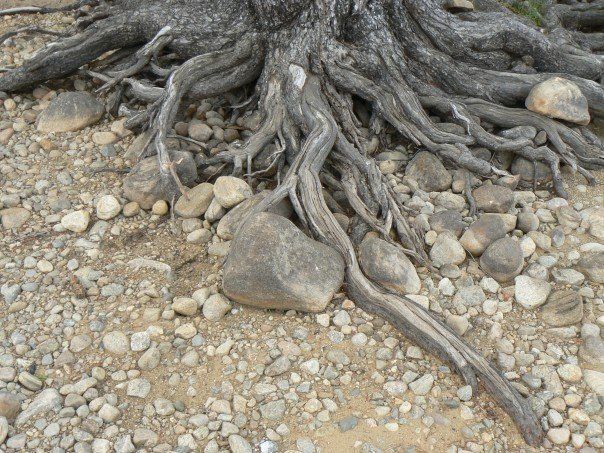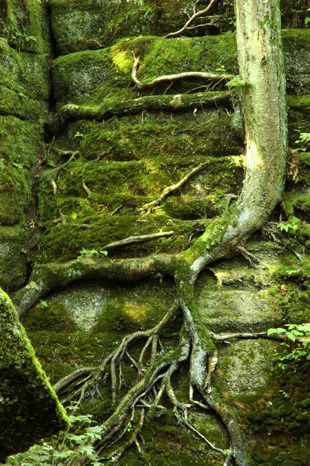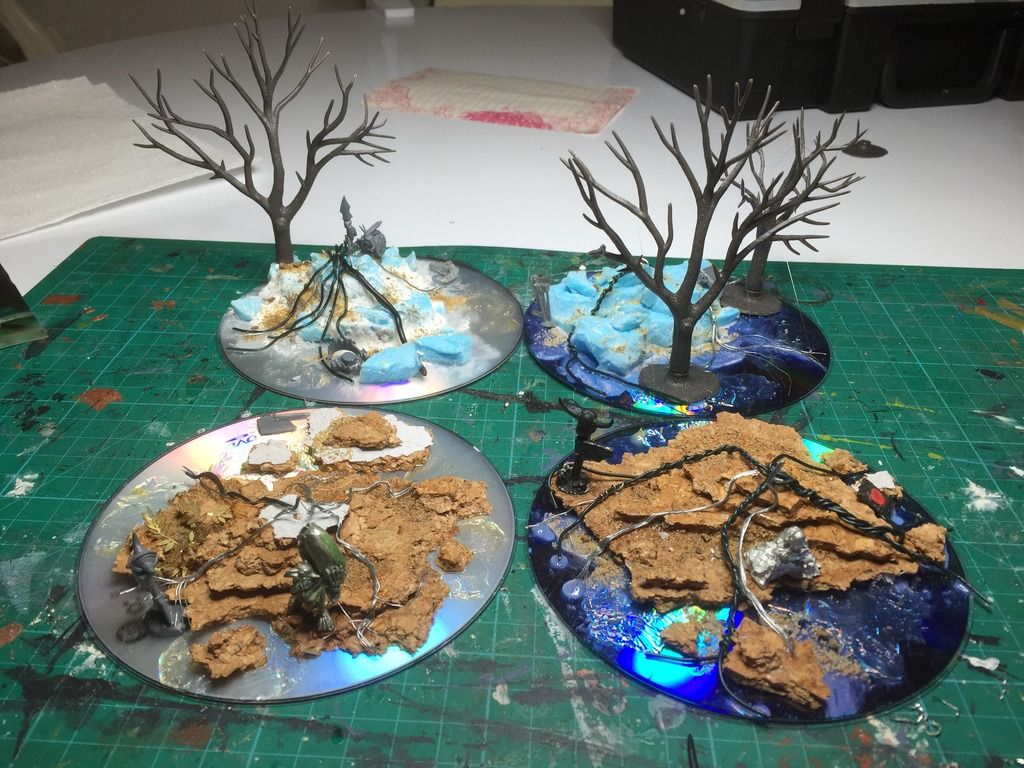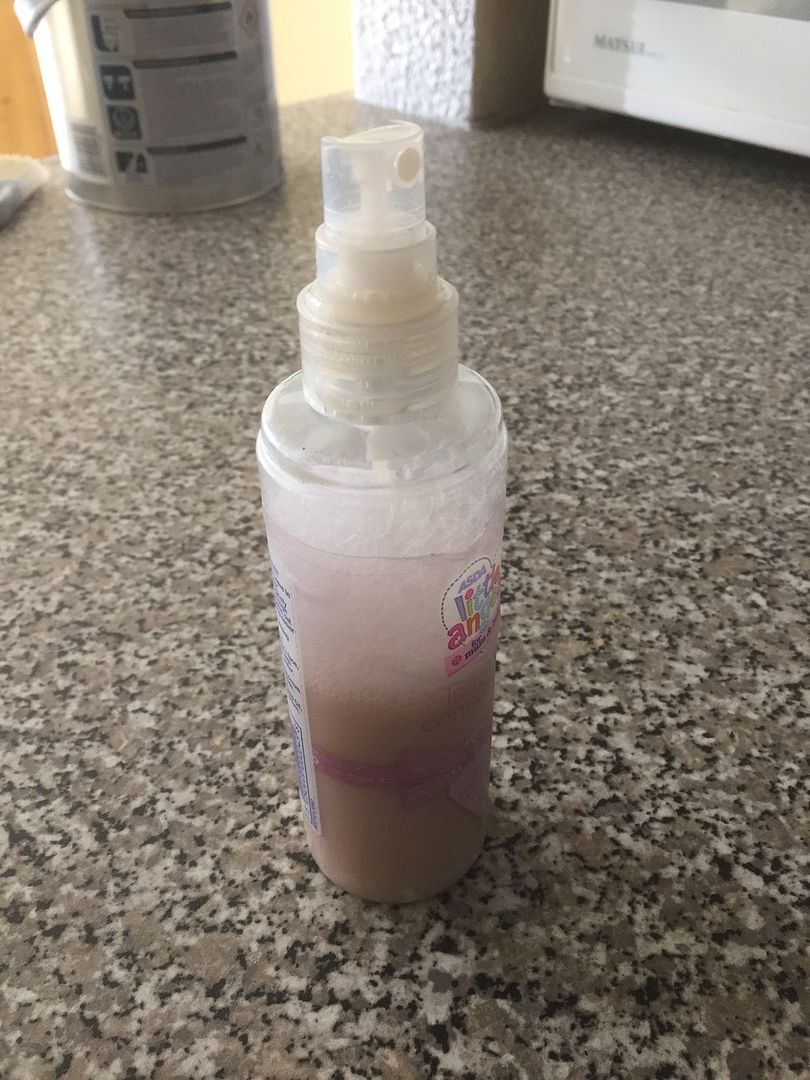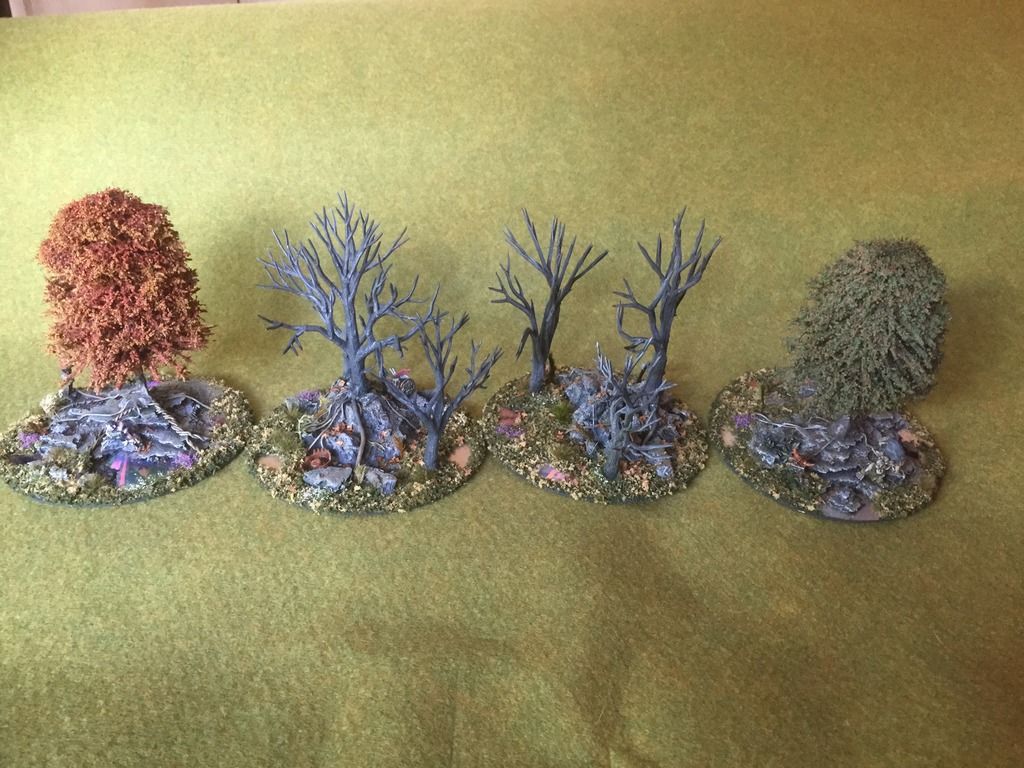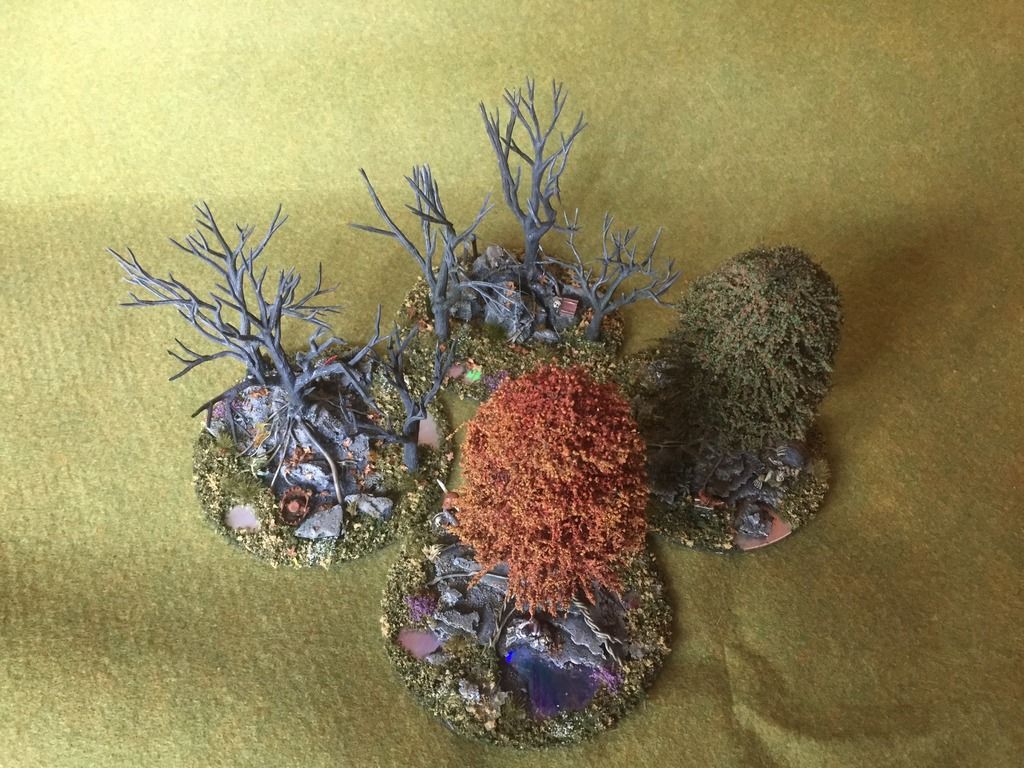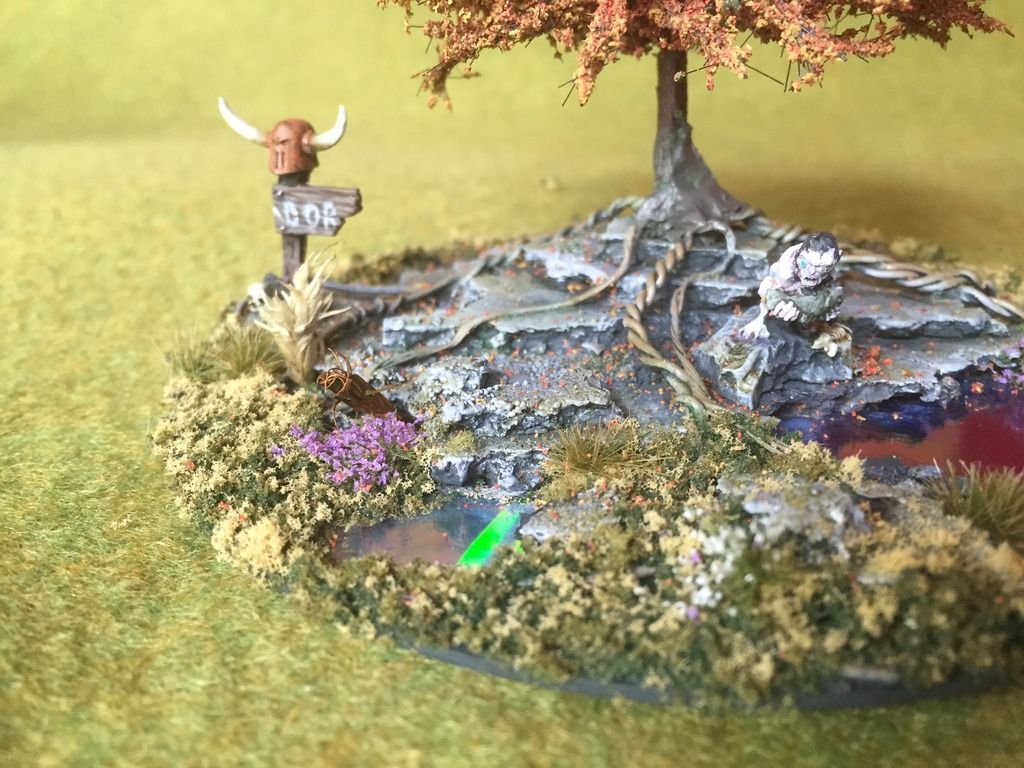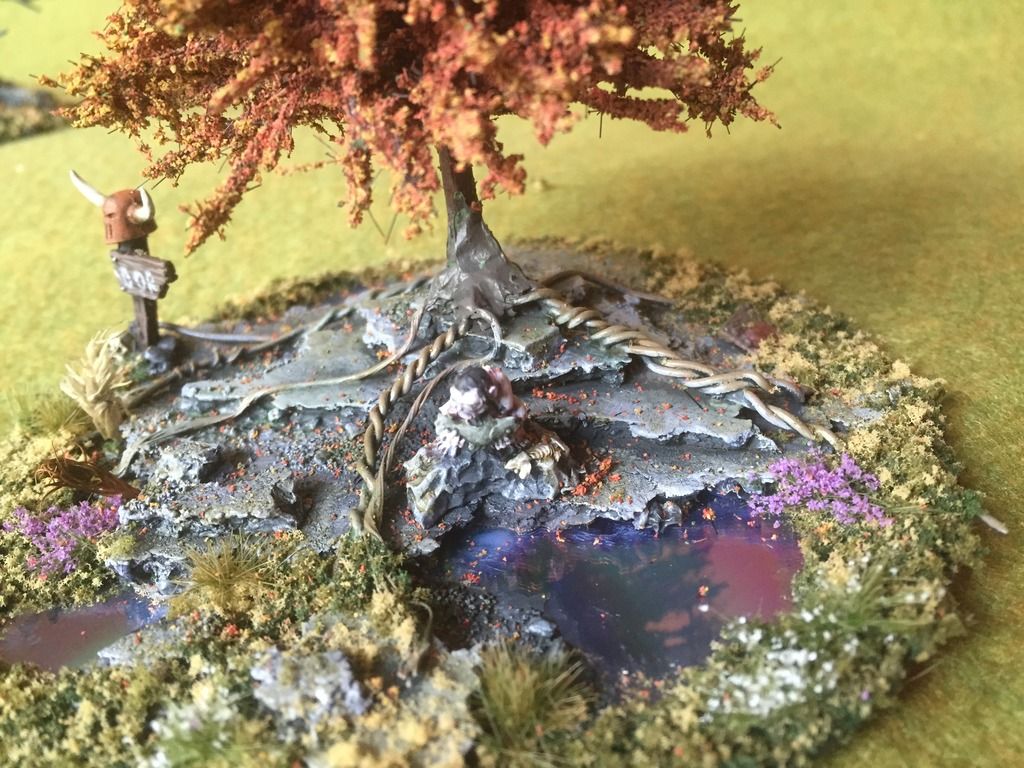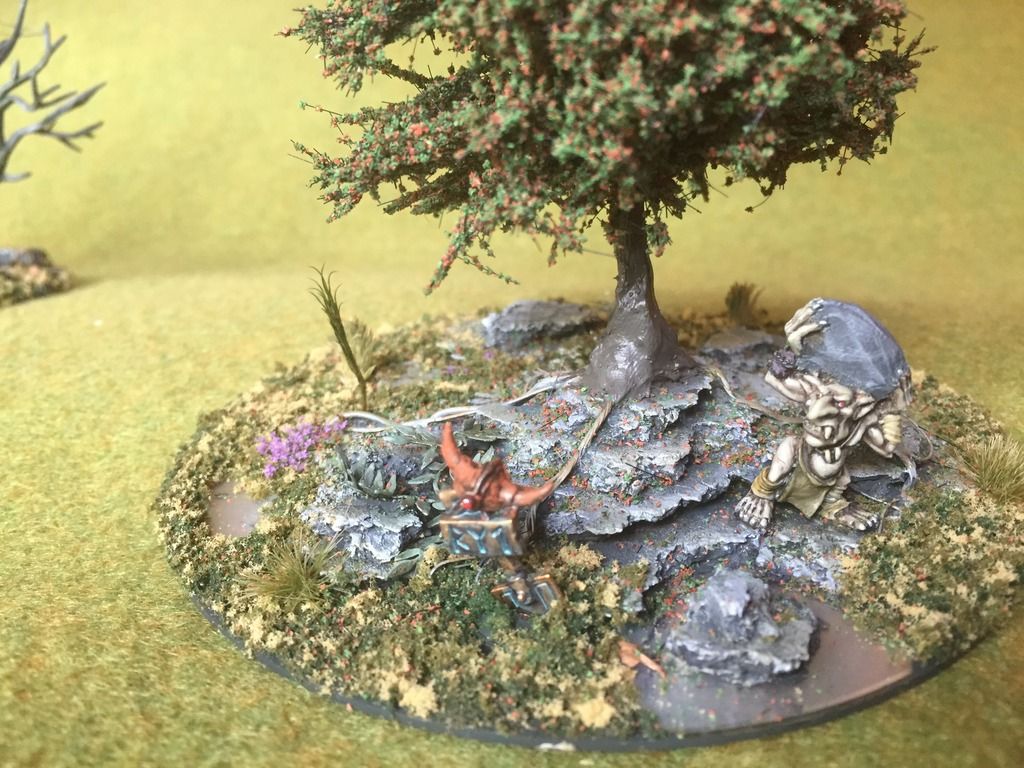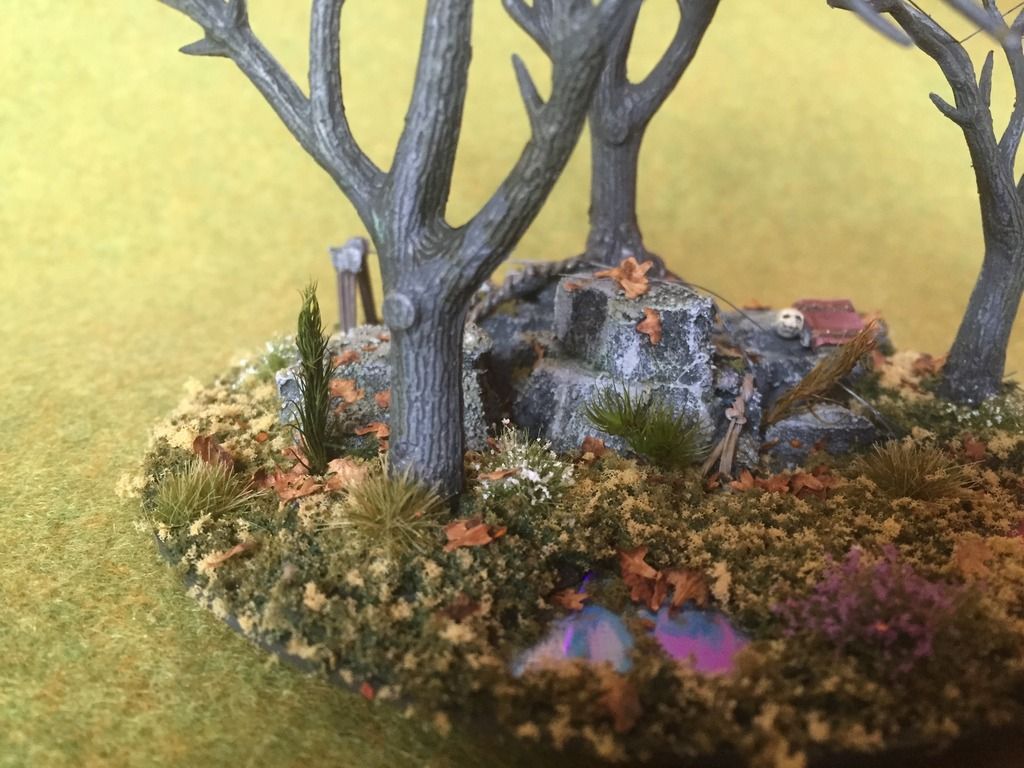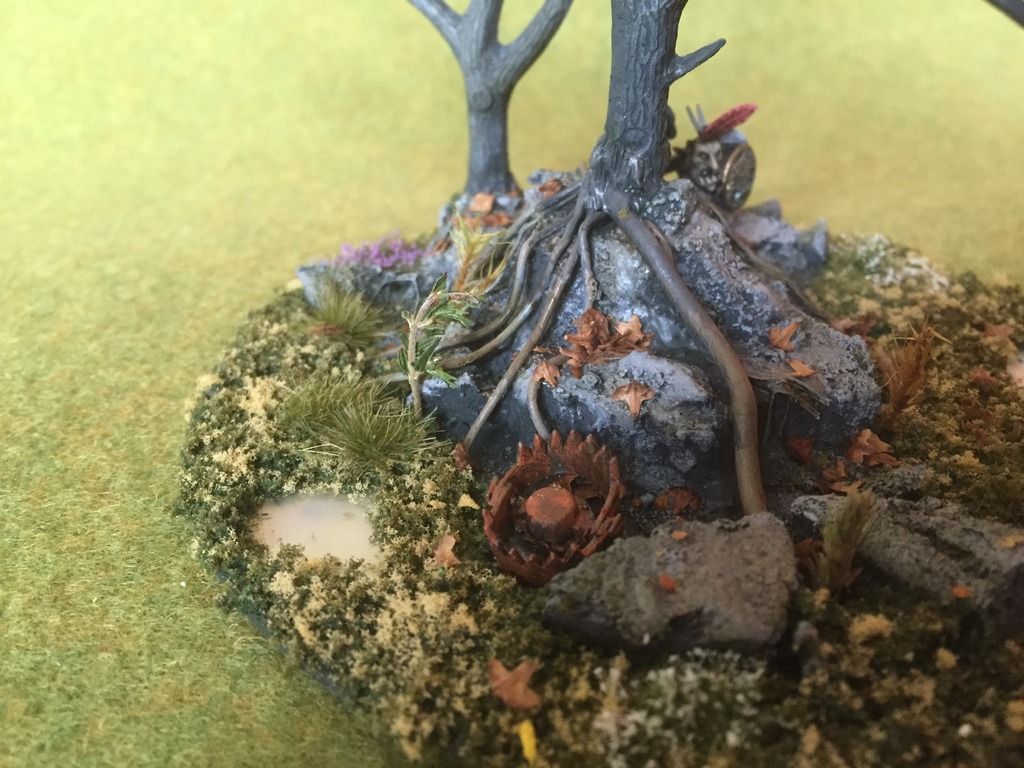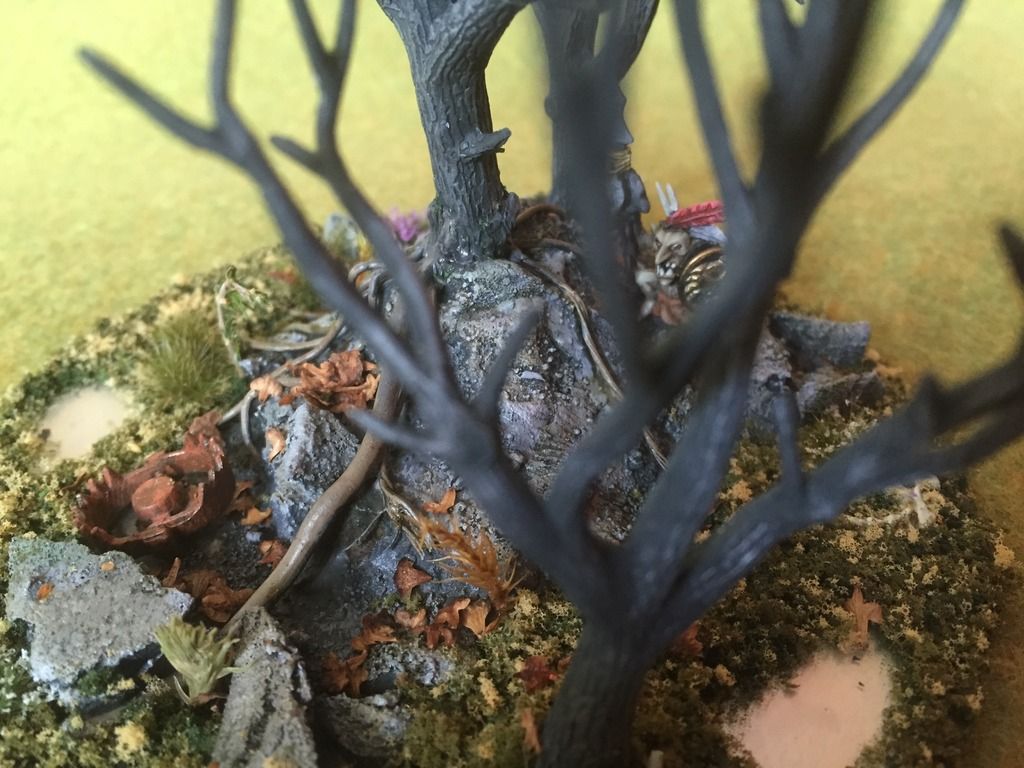I decided that it was about time to have some trees in my scenery collection. I was toying with the idea of scratch-building the trees themselves (possibly from twigs), but after some research I felt reluctant that I could actually make them look as good as bought ones, so I went shopping at
Antenocitis Workshop, did some experiments with ideas and materials and came up with these:
This blog post will show you how I made them.
I've always found it annoying that for gaming trees are often just plonked onto a small base and then become ripe for getting caught on the sleeves of your clothing or knocked over easily and in fact just end up being a pain in the arse when gaming. So they then just get moved out of the way. So to combat some of these issues I decided that my trees needed to be scenery pieces in themselves and to do this I would need to base them in an interesting way and if the base was large enough I can add some interesting details, experiment with some ideas/materials and also add stability to the tree itself. So I decided that a cd would make an ample sized base.
I was torn between using some of the armatures as old, gnarled and barren trees or maybe combining them with the lush looking ones on the same base. In the end I decided to (for now) make two of each on separate cd bases.
I always like to conduct some image research on Google images before I start and I was keen for my trees to be perched on rocks to give them a bit of extra height and interest and to challenge my modelling skills. These were what inspired me:
So here are the WIP photos:
You can see that I've used old CD's for the base, extruded polystyrene and/or cork tiles to make the rocks (these have then been coated in pva so that they can resist the aerosol from the primer) and different gardening and diy wires which were twisted and then used for the roots. Halfway through the process I found some wire in the garage which is already twisted into strands (I think these are from a picture hanging set) and this was ideal for unwinding from a thicker stem into several smaller roots, as you can see on the left one at the front.
The dull, wrinkly patches on the CD's, which look like pva residue, is actually masking fluid - the idea being that after these are primed and painted, I can peel the masking fluid away to reveal the shine of the cd and have a very quick water feature / reflecting pool! I've also added some stuff from my bitzbox to add a bit of narrative to each scene:
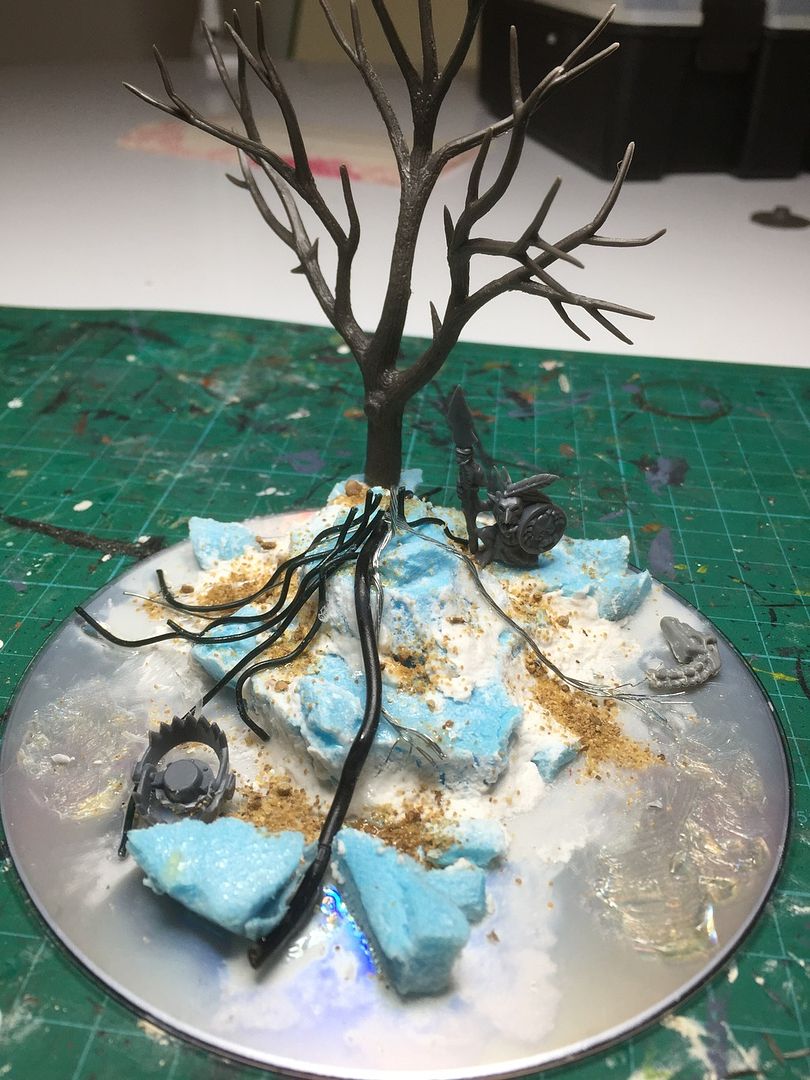 |
| A forest goblin guarding his patch (with the help of a trap) |
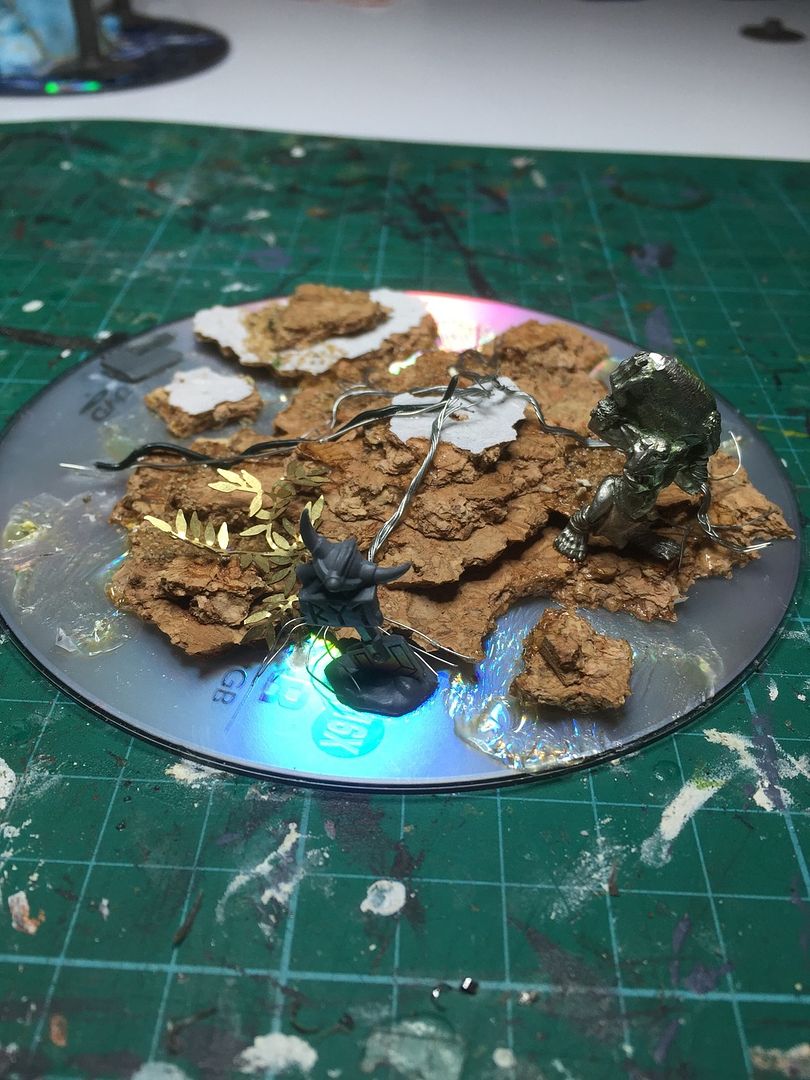 |
| A goblin stealing a rock, from what appears to be a Dwarven area. Some brass etched leaves have been added here too |
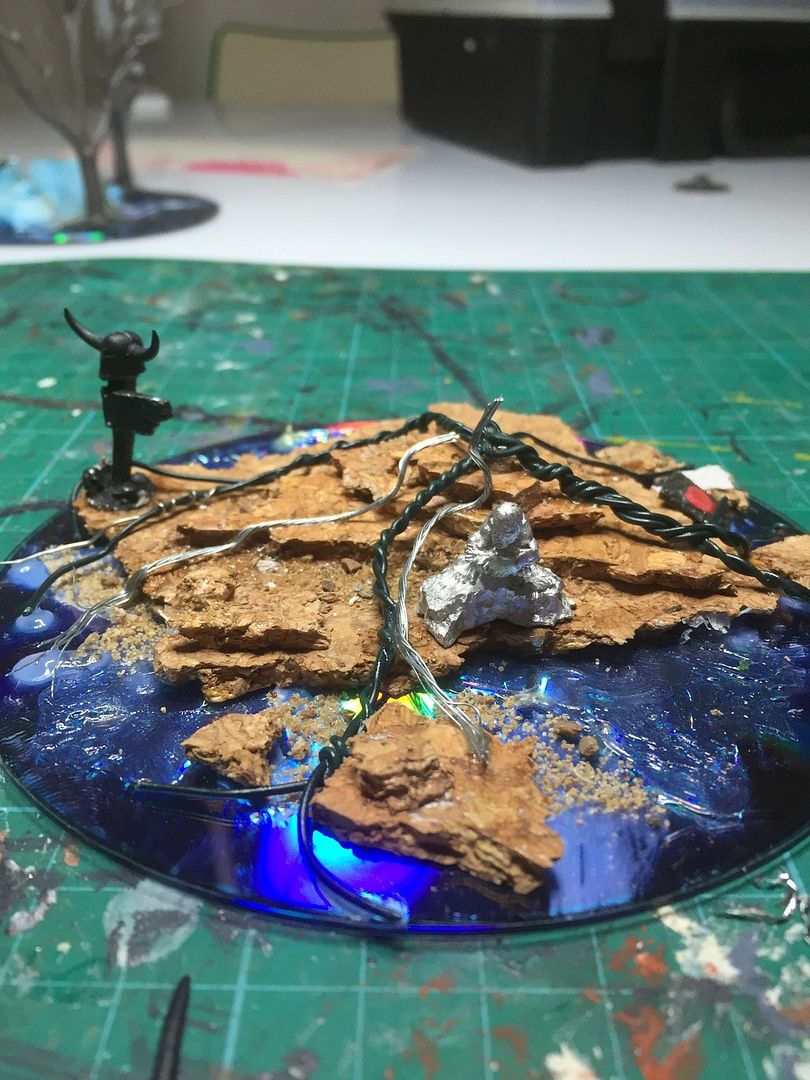 |
| Gollum with a fish by the pool. You can see his reflection in there which adds to the narrative. And a broken signpost in the background which will say "Mordor" on it. |
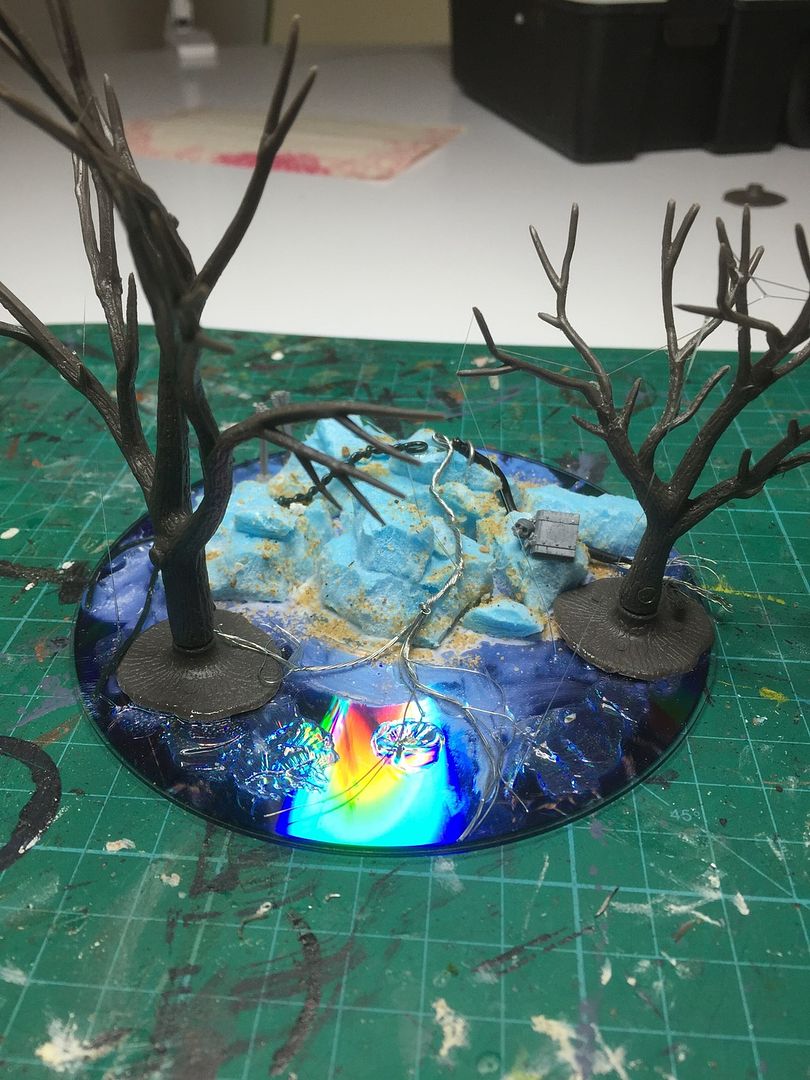 |
| This one has a magical tome on the rock, which could be used as an objective for a scenario. I plan to add an elf leaping between rocks, I have a perfect old model from my bitzbox for this. |
Once all the wires were superglued into place, some sand was added to pva to create a bit of extra texture to be painted as either smalls rocks on the base, or where I've added it to the rocks themselves, as moss.
The entire thing was then spray undercoated black ready for painting. In fact the painting was the quickest part. All of the bare trees were dry-brushed with two tones of grey and the rocks with highighted/drybrushed with about 4 tones up to a very pale grey. Lots of washes of greens and browns were added, once the rocks were dry, to create a weathered appearance. The bitz/details which I added took the most time to paint and in the end, to be honest, were a bit of a chore to complete. The problem with adding extra detail is of course that they still have to be painted to a decent standard... You may have noticed through my blog posts that I don't like to do things by half...
The final part was the basing of the scenery, which follows this
guide, but with the new experimental addition of mixing the pva/water/brown acrylic and some washing up liquid into one of my daughter's used de-tangle spray bottle and then spraying this solution on to each layer (rather than brushing) to quicken the process. It also acts as a nice sealer at the end of the entire process so none of the flock or dried leaves fall of:
And here are the final outcomes, including some close-ups of the detail, enjoy:
Many thanks for looking and please ask if you have any questions (I forgot to take photos at different stages of the process).




































